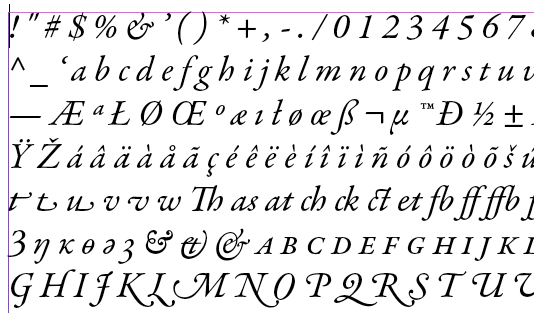Make a Font “Contact Sheet” in InDesign
Need a specimen sheet for a font? Or a catalog of all your font characters? Check out these tools!

What characters are hiding inside that font you’re using? There are likely some glyphs you don’t know about — hidden fractions, or ornaments, or odd ligatures. Wouldn’t it be cool to get a specimen or contact sheet?
Eric Menninga (one of the lead engineers on the InDesign team) came up with a clever script to do just that. The script writes a temporary tagged text file to disk with the desired characters in it, then places that file into a new InDesign document. You can choose the font and the beginning/ending glyph id numbers.
Unfortunately, when Eric sent it to me, there was no user interface. He was comfortable just editing the script each time he wanted to use a different font, but it troubled my delicate sensibilities. So: Chuck Weger — scripter and workflow consultant extraordinaire — came to the rescue, editing the script and giving it a little UI.

Choose the font, choose the range of glyphs you want (many fonts only go up to 300 or so, but some OpenType Pro fonts have thousands!) and click OK. The result show up in seconds:

If you need to know a Unicode or Glyph ID (GID) number for a character, just open the Glyphs panel (Type > Glyphs) and select the character in the text frame. The same character gets highlighted in the Glyphs panel. Hover the cursor over it and you’ll get details on it. Alternately, you can load it into the Glyphs tab of the Find/Change dialog box.
The script should work in CS3 and CS4. We think. You can download the script here. [Update: Here is a version of the script that works in InDesign CC]
Thank you to Eric and Chuck!
Making a Font Specimen Book
If you were looking to make a font catalog — to show a sample of every font in your library, for example — the above script will not help you. Instead, if you’re on the Mac, you want to take a look at Chris Paveglio’s InDesign Font Catalog applescript. There are likely other good font catalog tools out there, but I haven’t seen them. Suggestions from the audience?
This article was last modified on December 19, 2021
This article was first published on May 28, 2009




